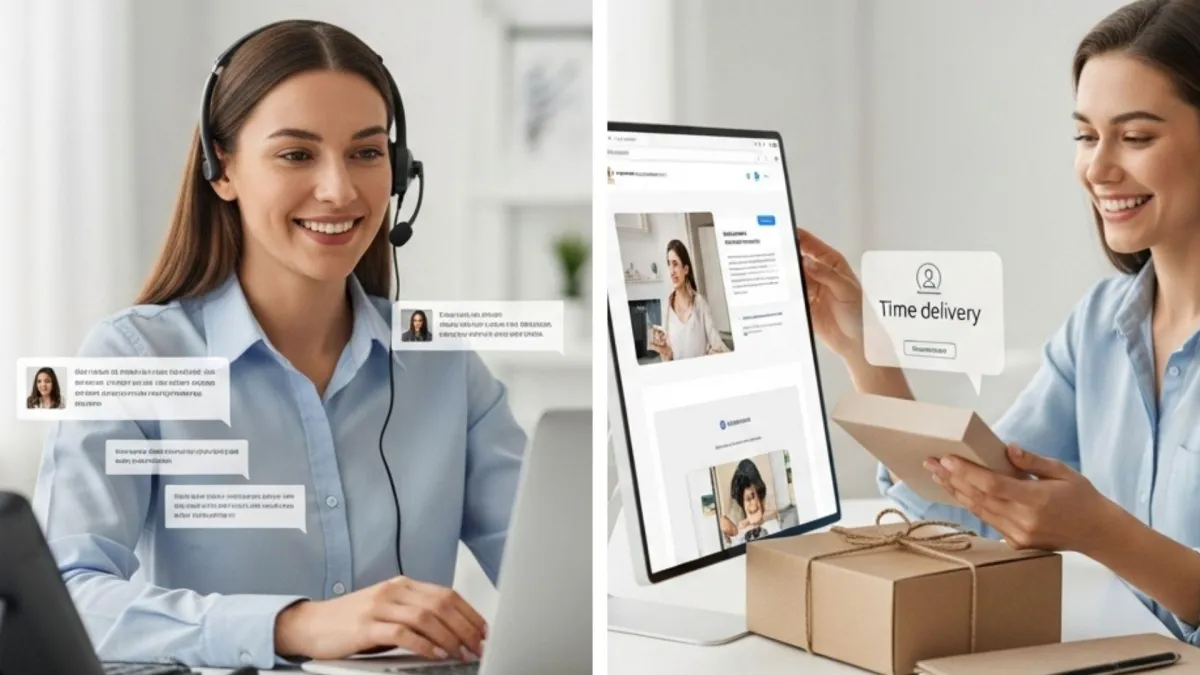
Customer Experience vs. Customer Service: What’s the Difference?
Customer satisfaction is paramount in the business world today. However, many businesses have been known to confuse "customer service" and "customer experience." Although the two are highly interconnected—and both essential to success—when all is said and done, they are not the same thing.

The distinction between customer experience (CX) and customer service can aid a business in refining its strategy, building loyalty, and obtaining a market advantage.
In this blog, we’ll break down the key distinctions between customer experience and customer service, explore how they work together, and share tips to elevate both.
What is Customer Service?
Customer service is reactive—it refers to the support provided to a customer when they have a question, complaint, or issue.
No matter if it's a helpdesk representative fixing a payment issue, a chatbot helping with a return, or an agent answering product questions, customer service is all about:
Resolving issues
Sharing information
Facilitating transactions
Delivering satisfaction at precise touchpoints
Example:
Someone contacts your support team because they never got their package. Your representative researches the problem, re-ships the product, and apologizes. That's good customer service.
What is Customer Experience (CX)?
Customer experience is comprehensive and anticipatory. It includes all interactions that a customer has with your brand—right from the first impression to post-purchase interaction.
CX encompasses:
Website usability
Advertising tone
Product design
Purchase process
Delivery and packaging
Customer service
Loyalty programs
Post-sale follow-ups
It's the culmination of all touchpoints, influencing the customer's perception of your brand as a whole.
Example:
A shopper finds your site with ease, has a seamless mobile shopping experience, gets their order in quick time with high-quality packaging, and receives a personalized thank-you message. Even without support intervention, they feel special. That's excellent customer experience.
Why the Difference Matters
Understanding the distinction between customer experience and customer service is important because:
1. You Can't Fix What You Don't Understand
Suppose you think you're providing excellent CX simply because your support agent is responsive. You're overlooking the larger situation. Friction somewhere else—such as a buggy app or complicated returns process—can continue to harm overall experience.
2. CX Drives Loyalty—Not Just Service
Good service fixes things, but great customer experience stops many of them from happening at all. It fosters emotional connection, which is the foundation of retention and advocacy.
3. Everyone Owns CX, Not Just the Support Team
Marketing, design, logistics, product development—all of them impact CX. Focusing solely on customer service restricts your capacity for enhancing cross-functional customer experiences.
How Customer Service Fits Into the Larger CX Strategy
Customer service is a subset of customer experience. It comes into play most critically at times of heightened stress (e.g., product problems, billing discrepancies, complaints). An excellent support exchange can salvage a poor experience and even convert an irate customer into a devoted aficionado.
However, if the remainder of the journey is faulty—clunky UX, delayed shipping, off-base offers—great service won't salvage the relationship.
That's why brands must embed service into a broader, forward-thinking CX strategy.
How to Enhance Customer Service AND Customer Experience
✅ 1. Educate Support Teams with Compassion
Customer service is not about problem-solving—it's about problem-solving with empathy. Invest in:
Active listening training
Soft skills training
Empowering agents to act on their own
Personalized answers (not scripted)
✅ 2. Map and Audit the Customer Journey
To enhance CX, you need to know the entire customer lifecycle. Employ tools such as:
Customer journey maps
Heatmaps and analytics
Surveys and interviews
Pinpoint friction points, right from website UX to post-purchase emails.
✅ 3. Leverage Technology to Empower Seamlessness
Invest in:
CRM systems to integrate customer data
Chatbots for real-time support
AI-powered recommendation engines
Omnichannel communication platforms
The aim is to make each interaction swift, pertinent, and seamless.
✅ 4. Collect and Act on Feedback
Customer service generates valuable data, but CX insights come from multiple sources:
Net Promoter Score (NPS)
Customer Satisfaction Score (CSAT)
Customer Effort Score (CES)
Social media sentiment
Product reviews
Track trends and close the loop—show customers you’re listening and evolving.
✅ 5. Create Consistency Across Channels
Customers interact with your brand via email, social media, mobile apps, websites, and even physical stores. Inconsistent experiences can confuse or frustrate them.
Ensure consistent:
Branding
Messaging
Support quality
UX/UI design
CX in Action: Real-Life Scenario
Final Thoughts
Customer service is essential—but it's just one small part of the picture. In order to win in today's marketplace, however, companies have to think larger. Customer experience is the emotional connection your customers experience when they're interacting with your brand. Every interaction counts.
So don't settle for fixing problems—work toward creating delight, minimizing friction, and establishing trust. When you deliver exceptional service in the context of an unforgettable, frictionless customer experience, you don't merely win a sale—you win a loyal champion. If you are looking for the best CRM system and want to boost your business sales, contact VizionCX now.


Facebook
Instagram